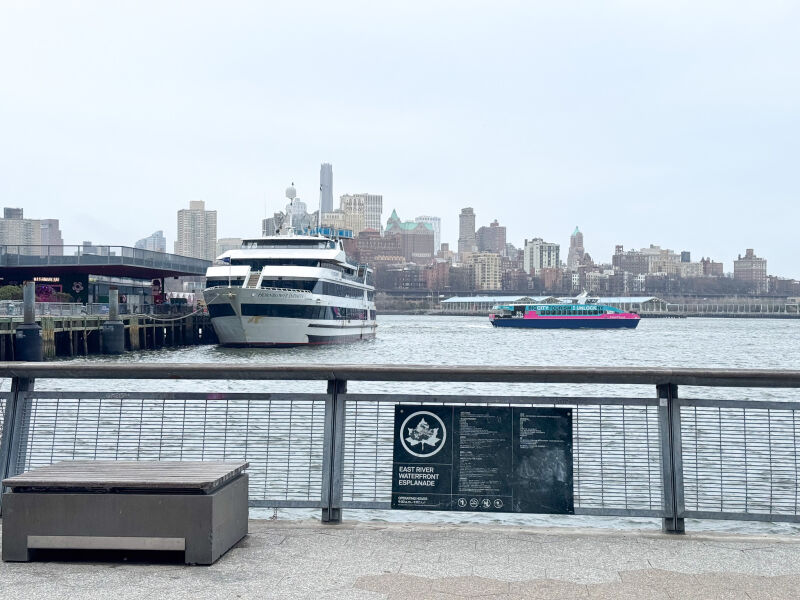East River Esplanade
East River Esplanade
Acquired in 1939 as a result of the construction of the East River Drive (later renamed the Franklin Delano Roosevelt East River Drive), the East River Esplanade is a vital part of New York City’s vast greenway system. The park forms the edge of Manhattan as it meets the East River and varies as one travels along it, with sections maintained by different groups and featuring various designs. At the time of construction, borough president Samuel Levy (1876-1953) predicted that the project would “play a leading role in the transformation of the East Side from a slum area into a beautiful residential district.” The East River Esplanade was part of a larger City effort to improve living conditions in crowded Lower Manhattan with the addition of playgrounds and open space.
Until the 1990s, the parks along the East River were not unified as they are today. Though the 1993 Greenway Master Plan made connected open spaces a priority for the city, greenways have long played an important role in New York. In 1866, Frederick Law Olmsted and Calvert Vaux, designers of Central Park, proposed a coordinated greenway system using tree-lined parkways to extend the verdure of Prospect Park across Brooklyn.
The 1993 plan called greenways “the parks of the 21st century” and “part of the transportation infrastructure providing for pleasant, efficient, healthful, and environmentally sound travel by foot, bicycle or skates.” This line of thought persisted through the early 2000s, when Mayor Michael Bloomberg (b. 1942) led an initiative to renew Manhattan’s waterfront and proposed creating a “ring around Manhattan” in the form of a multi-use recreational path around the borough. The East River Esplanade as it exists today is a result of this movement, when the city wanted to connect it with the Hudson River Greenway, a state initiative along the Hudson River Valley.
Landscape architect Thomas Balsley (b. 1943) designed the two-block segment of the East River Esplanade from East 36th to East 38th Streets. Balsley was also responsible for the design of other New York City waterfront parks such as the Chelsea Waterside Park and Riverside Park South. Its design incorporates various levels in a Jardin Luxembourg fashion, including a raised level beneath the park’s trees. The southern entrance at East 36th Street features a fitness area where patrons can find instructions for stretching exercises. The park is characterized by its geometric symmetries and ordered lines.
In 2016, significant funding was allocated to infrastructure improvements on the East River Esplanade, initiating major projects and repairs of the park, reflecting the City’s commitment to the recreation and waterfront revitalization.
Check out your park's Vital Signs
Clean & Safe
Green & Resilient
Empowered & Engaged Users
Share your feedback or learn more about how this park is part of a
Vital Park System




